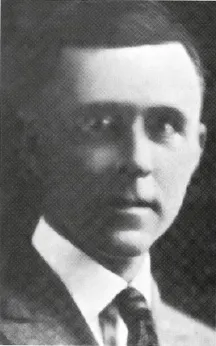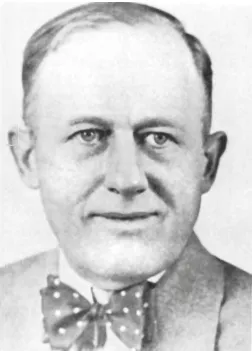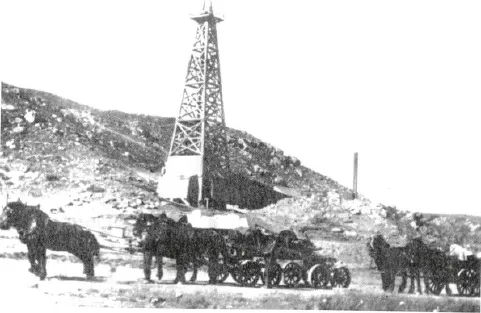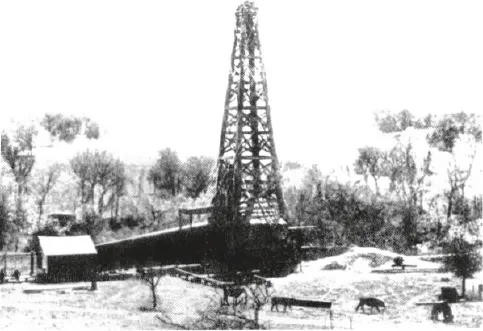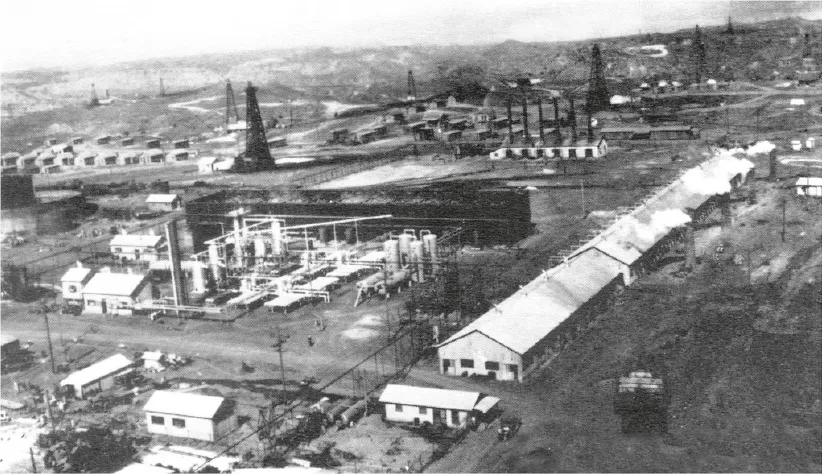![]()
I
The Boom
It probably was happenstance that John A. Holmes was killed exactly one year from the day of his appointment as district attorney of the 84th Judicial District. His killer may have known that Holmes had been asked to fill the unexpired term of the previous DA, who resigned under pressure on September 13, 1928, but apparently the day had no special significance to the assassin. One thing we do know for sure is that it was rumored, no, positively said, that Holmes would never “serve out his term of office.” Holmes was aware of the story, and while he gave credence to it, it didn’t stop him from trying to clean up the city and county.
Holmes, “A Fearless Martyr to Truth, Honor and Duty” (inscribed on his tombstone), was born January 20, 1886, in Mississippi. His father, T.S. Holmes, was born in Durant, Mississippi, and his mother, Mary Ella Salus Holmes, was born in Salus, Mississippi. Holmes attended Mississippi A&M College, and the University of Texas Law School. He was at UT from 1907 to 1909, and while some indicate he was a Law School graduate, he was not listed among the seniors in the Law School’s 1909-1910 directory. The only notation in the directory was that he was district attorney of the 31st Judicial District, Miami, Texas, Roberts County.
His address while attending UT was 200 West 17th Street, Bonham, Texas. Records of the Texas Supreme Court show he was licensed to practice in the 31st Judicial District on July 27, 1909, so it is quite likely he took the bar examination without ever graduating, not an uncommon practice in those days.
JOHN A. HOLMES, District Attorney in Borger, was assassinated by a killer who waited for him one dark night.
GOV. DAN MOODY posted a reward for the capture and conviction of Holmes’ killer or killers.
CLEM CALHOUN, flamboyant and tough, succeeded Holmes as District Attorney.
He apparently built a successful law practice in Miami, and in 1918, he was appointed district attorney upon the resignation of E.J. Pickens, who joined the army for service in World War I.
Holmes married Velma Green, and had one daughter. Mrs. Holmes taught music, and her mother worked for Locke Brothers in Miami.
When the big oil discovery was made in Hutchinson County in 1926, Holmes, who had run on the Democratic ticket for district attorney in the 31st Judicial District that same year (he won), resigned early in 1927 and moved to Borger to enter private law practice. Clifford Braley of Dallam County was appointed to fill the vacancy caused by Holmes’ resignation.
When the Texas Legislature created the 84th Judicial District, Governor Dan Moody appointed Curtis Douglas, a brilliant young man, a University of Texas graduate, and the governor’s classmate, to fill the DA’s office. Moody, familiar with Douglas’ habits, exacted a pledge from him that he would not drink liquor during his term of office. Douglas said he wouldn’t, and that if he did take a drink, he would resign. As promises go, this one was about as good as most New Year’s resolutions, and lasted about as long.
Douglas was ineffective as a defender of the people, spending too much time with a bottle of Scotch and not enough time prosecuting criminals.
It wasn’t that Douglas didn’t have the ability, it was just that he was easily swayed by the wrong people. Or as one observer put it: “The criminal ring laughed at the law.”
C.S. Gardner, who was living in Wichita, Kansas, at the time of Holmes’ death, wrote Governor Dan Moody that he moved to Borger “as a traveling salesman for the Ranney-Davis Mercantile Co. in early ’27. Soon after I arrived there I resigned.
“I saw what I thought was good prospects for a retail merchants association. That I organized—my first move was against check artists, but with not the best of results, as Curtis Douglas, then District Attorney, refused to prosecute. As it happened I officed with J. A. Holmes, who recommended to R.T. Macy, then Constable Precinct No. 2, that I be given a commission — that he did.
“I resided at the Marland Hotel, where your men [Texas Rangers] were located then. It was soon brought to attention that I was the stool pigeon for the Texas Rangers. That was not true — I did work many nights all night with Rangers C.O. Moore and Hale Kirby.
“When the notorious gambling hall of the Plains Hotel was raided by Kirby, Macy, Martin and Milligan [the owners] by chance were missed. The next day I placed Martin under arrest. The best charge I could get against him was a fine for gambling, of which he boasted was refunded to him. I was at once relieved of my commission and warned that I better leave.
“Thirty some Borger merchants petitioned Joe Ownbey [sheriff] that I be given a County Commission. It was but a few days that Ranger Kirby located the brewery of the Borger beer ring and asked me to help raid it. I do not recall how many thousand bottles of home brew we confiscated. The man we caught in charge turned over a complete set of books showing who owned, operated, and collected for all the different joints. We placed the owner in the city jail, and before daylight, this man was ordered to leave or threatened to be killed. He left Borger and we could not locate him. The owner of this joint or brewery was given a job as city policeman. A couple of nights later Kirby and I made the biggest catch of dope runners in the history of Borger, of which three of them were sent to the Federal Penitentiary. I was notified at once by Joe Ownbey that I resort strictly to check artists and such work and discontinue all other peace officer work.”
Because Douglas wasn’t doing his job, Governor Moody asked for his resignation. He refused, however, was finally forced to quit, and Holmes was asked to fill his unexpired term.
He and H.M. Hood headed the Democratic ticket in November and were elected to the offices of district attorney and county judge, respectively. He assumed office as DA on January 1, 1928, becoming, as W.D. Christopher of the Perryton Land Co., Perryton, Texas, wrote to Governor Moody, “a bold and fearless champion of law, order, and decency.” Christopher, a close personal friend of Holmes, said that Holmes always stood for what he thought was right openly and boldly, “so that not even his enemies could call him a coward.”
The conditions that brought about the assassination of Borger’s district attorney were set in motion long before the town came into existence, going back to the discoverer of the Panhandle Field, Charles N. Gould, a University of Oklahoma geology professor.
During the summer months, Gould worked on federal surveys. In 1903, ’04, and ’05, he made studies of the Texas Panhandle water resources. Thirteen years later, when asked by M.C. Nobles, an Amarillo businessman, if he happened to know any place in the Panhandle where there might be oil, Gould recalled some of the big domes he’d seen along the Canadian River north of Amarillo.
All the geology he knew suggested the possibility of oil and gas, and he told Nobles and his partners in the newly-formed Amarillo Oil Company where to drill. They completed the first gas well in the Texas Panhandle on December 13, 1918, calling it the No. 1 Masterson. They then drilled other wells on the 70,000 acres the company leased on both sides of the Canadian, thirty miles north of Amarillo. Out of their next nine wells only one was dry. The others averaged from six million to ten million cubic feet of gas per day.
AN OIL WELL in the Texas Panhandle about 1925, a year prior to the Borger boom.
Photo courtesy of Phillips Petroleum Co.
TYPICAL OILWELL IN Oklahoma during the early 1920s. This well was brought in by the Marland Oil Co., which merged with Continental Oil in 1929. Marland was quite active in Borger, Texas and built a hotel there.
Photo courtesy of the Continental Oil Co., Houston, Texas.
Gould, also, was instrumental in helping to locate the first oil well in the Panhandle.
On March 25, 1919, Eugene S. Blasdel and P.H. Landergin leased twenty sections of the Captain S.B. Burnett 6666 Ranch in Carson and Hutchinson counties. They then employed Gould and his staff to survey the land. On July 5, 1919, Blasdel and Landergin and a new partner, W. H. Fuqua, assigned eight sections to the Gulf Production Company. Thirty days later, on August 5, Gulf spudded in a test well and began drilling on September 24, 1919, completing the well on August 4, 1920, at a depth of 2,411 feet. The well produced fifty million cubic feet of gas per day, making it the first gas well within a twenty-five mile radius of the Amarillo Oil Company’s discovery.
Then, on November 20, 1920, Gulf began drilling its No. 2 Burnett, completing it on April 5, 1921, at a depth of 3,052 feet for an initial 175 barrels of oil a day, making it the first oil well in the Texas Panhandle.
The area developed slowly. For one thing, there was little demand for the quality of oil Gulf pumped; and secondly, there was no pipeline outlet as yet. Gulf, in 1923, drilled a 135-barrel oil producer on the Dial Ranch in Hutchinson County, and W.W. Silk completed a 215-barrel well, the No. 1 S.B. Burnett, in Carson County. Silk announced plans to put up a 55,000-barrel steel storage tank, also. Texas Company drilled its No. 1 Burnett in Carson County. And that pretty well told the drilling story in 1923.
At the end of 1924, there were sixteen producing wells in the Panhandle with a total production of 1,662 barrels daily, and by the end of 1925, there were fifty-six wells, bringing total production up to 5,536 barrels daily.
Two wells were credited with causing the Borger Boom.
On January 11,1926, the Dixon Creek Oil and Refining Co., organized in 1919 by S.D. (Tex) Mcllroy and his brother, White, brought in a well just east of what was to become Borger. Among the owners were M.C. Nobles, H.A. Nobles, Dr. M.W. Cunningham, and Mrs. Bertha McGregor.
PANTEX PLANT (now Phillips, Texas) looking northwest, Oct. 16, 1926.
Photo courtesy of Phillips Petroleum Co.
Recalling the drilling of the Dixon Creek well, Fred Surratt of the Texas Company said:
“Most of the first real development of the Panhandle Field was done by independent companies and ‘wild cat’ concerns, who in a large way are due credit for the real play. Very little was accomplished until the Dixon Creek Oil Co. brought in its big well, Smith No. 1, just east of present Borger. S.D. Mcllroy, who had charge of the well, felt in very low spirits about it, being several times on the point of giving up, but because of his dogg...

